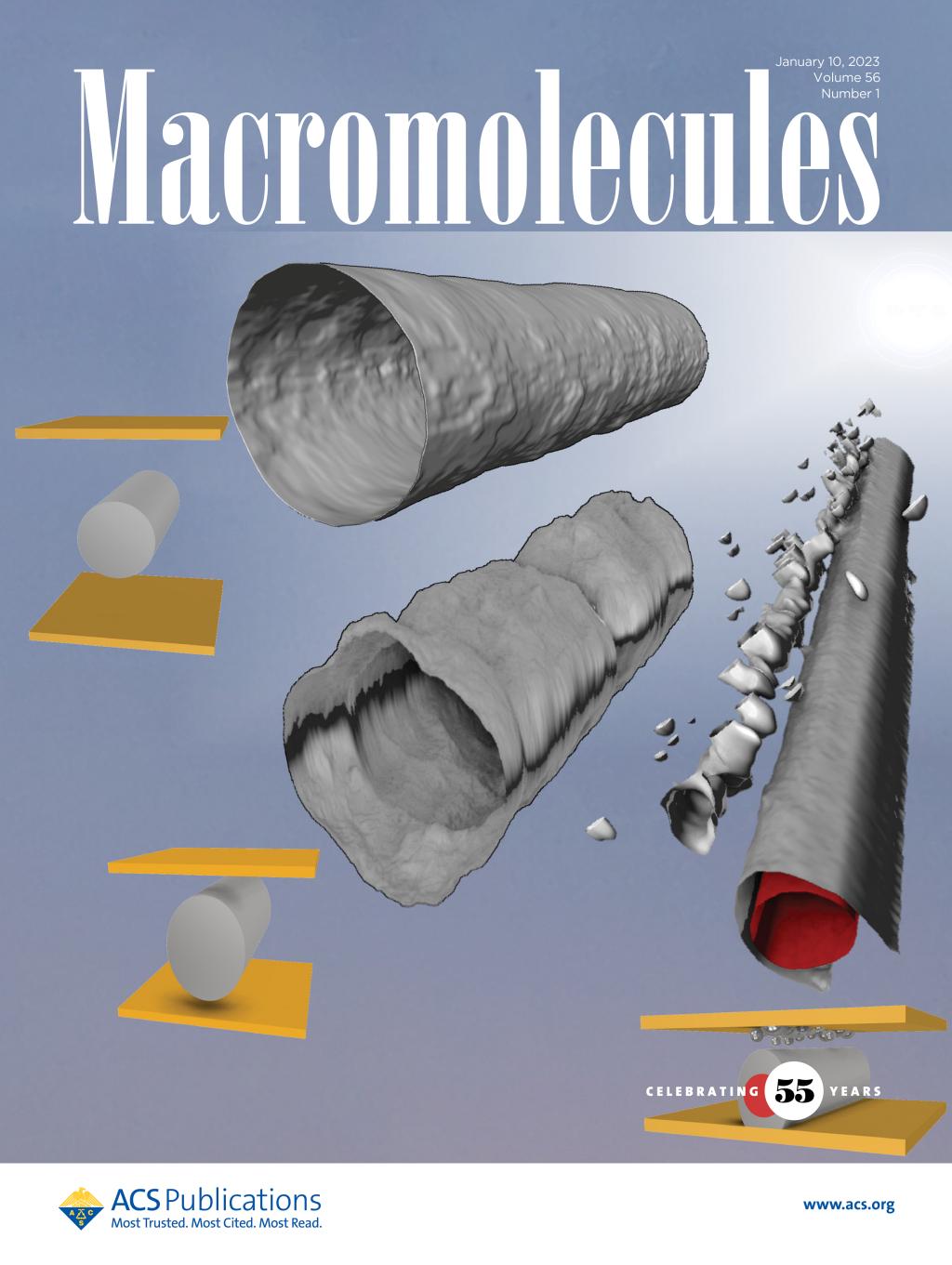Two-photon confocal laser microscopy was used to obtain three-dimensional (3D) images of the morphology of poly(lactic acid) after shear-induced crystallization. The necessary fluorescence contrast was achieved by doping the polymer with Nile Red. The dye gets partially rejected from the growing crystalline aggregates during their formation, thus creating a renderable high-low fluorescence boundary outlining the shape of the aggregates. Parallel-plate melt-shearing and pulling a glass fiber through the melt were used as the two methods to achieve shear-induced crystallization. This study focuses on the shape of the resulting cylindrites, i.e., large-diameter shish-kebabs. The first 3D images of polymer cylindrites show that, if far from boundaries, they are circular cylinders, highly regular after fiber pull, but less so after parallel-plate shear. In the latter case, the cylindrite reveals the trajectory of the foreign particle that had nucleated its growth. Interestingly, lateral growth of the cylindrites was found to accelerate toward the sample surface when approaching it, giving the cylindrite an elliptical cross section. Furthermore and surprisingly, in the case of fiber pull, a row of spherulites is nucleated at the polymer–substrate interface nearest to the fiber, aligned along the fiber axis and appearing ahead of the rest of the space-filling spherulites. Both the phenomena, elliptical cylindrites and row of spherulites, are attributed to negative pressure buildup peaking at the cylindrite growth front and at the nearby film surface caused by crystallization-induced volume contraction. The pressure and flow distribution in the system is confirmed by numerical simulation. The results illustrate the value of 3D imaging of crystalline morphology in polymer science and polymer processing industry.

原文链接:https://pubs.acs.org/doi/epdf/10.1021/acs.macromol.2c01433